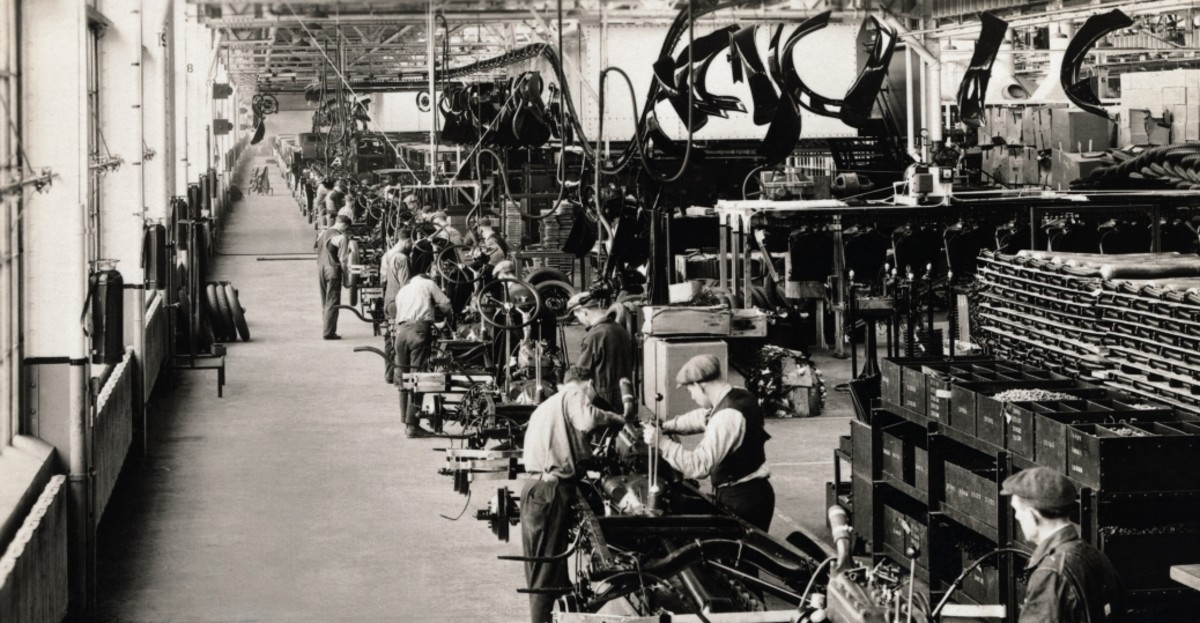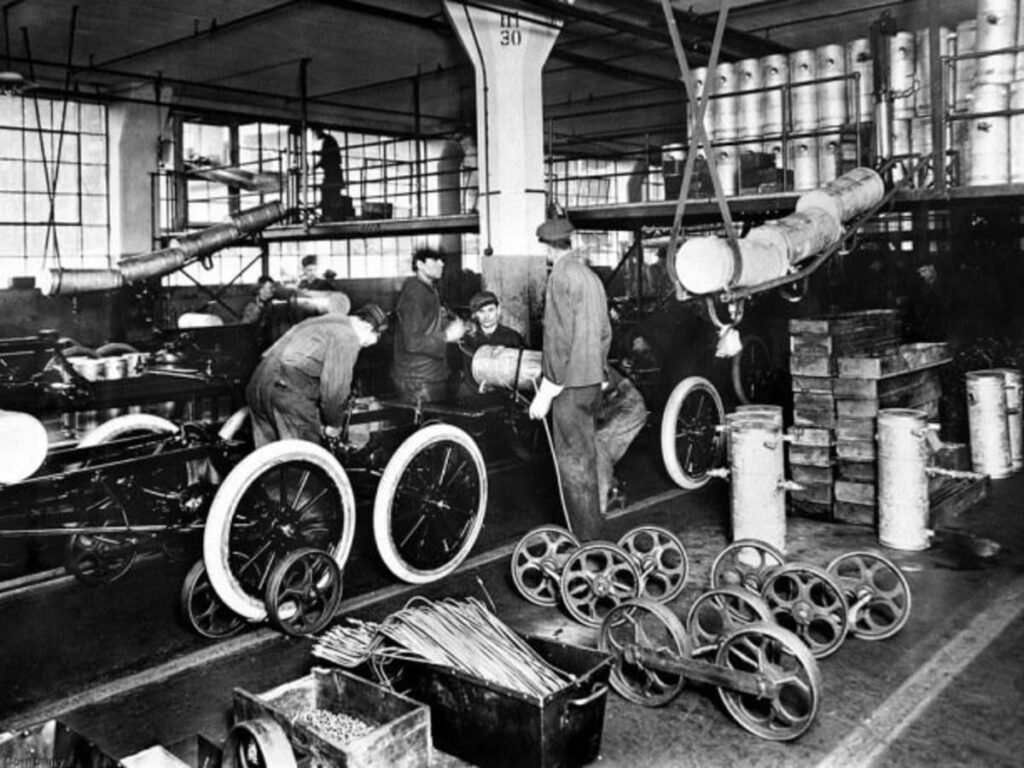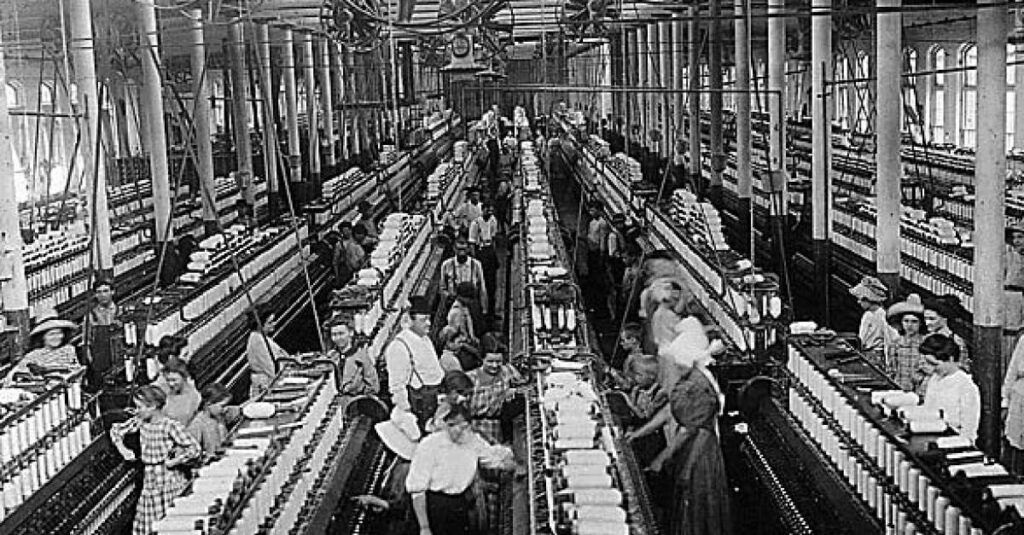We are living through the Fourth Industrial Revolution.

This is a phrase coined by the economist and founder of the World Economic Forum, Klaus Schwab, in his 2016 book of the same name, although it’s clear the trends have been fairly apparent for some time, and most people agree the Fourth Industrial Revolution started in the first decade of the twenty-first century.
The First Industrial Revolution took place between 1760 and around 1840 and was triggered by the invention of the steam engine, the development of mechanized systems of production, and the building of railways to distribute those products and people.

The Second Industrial Revolution occurred at the end of the nineteenth century and in the first quarter of the twentieth century, which took those previous learnings, and introduced the usage of electricity and the assembly line to speed up production still further.

The Third Industrial Revolution took place from the 1960s until the end of the century, with the development of computerized technologies, starting with mainframe computers in the 60s and 70s, to the development of personal computing in the 70s and 80s, and the growth of the internet in the 1990s.
The Fourth Industrial Revolution started at the turn of this century, and will continue for at least the next 10-20 years. It is characterized, according to Schwab “by a much more ubiquitous and mobile internet, by smaller and more powerful sensors that have become cheaper, and by artificial intelligence and machine learning”. Personally, I would add another defining factor to Schwab’s list; the proliferation of available data and the fall in cost of data storage and processing to analyse them. The Fourth Industrial Revolution is often called the “Digital”, but it could just as easily and accurately be described as the “Data”.
Unlike the other Industrial Revolutions, as you can tell from the outline above, there hasn’t been much time between the end of the Third and the start of the Fourth Industrial Revolutions. Indeed, I challenge any of us who have lived through that change to recall a moment when we thought “ah, that must have been the start of the Fourth Industrial Revolution”! So, is it really a new one, rather than a continuation of the previous one?
As I say, for me, the affordability of data storage and analytics is a fundamental shift that only belongs to the Fourth. As Schwab points out, the reason why this is a new revolution is that the world is at an inflexion point because the ubiquity and power of these digital technologies will enable the creation of new “unprecedented things”; topics like Smart Cities, and Smart Factories, and even Smart Bodies, have emerged in recent years, which previously would have been impossible. Or perhaps more accurately, would have remained only in the realm of science fiction.
To share some examples of how the world has changed from the Third to the Fourth Revolutions, which are now science reality, but were science fiction during the Third Revolution:
For Smart Bodies, think of the 1960s film, “Fantastic Voyage”, in which a submarine and its crew are shrunk to molecular size and injected into a scientist who needs to be saved from assassination. Compare this, in concept, rather than in specifics, to blood monitoring for various diseases, and apps that monitor blood glucose levels for diabetics, and even the creation of an artificial pancreas. This is, in fact, an intelligent monitoring device, which can identify and prevent medical emergencies before they become acute. It perfectly fits Schwab’s definition (and includes remote data and real-time analytics, so it fits mine too!).
To take an even more recent science fiction example, this time for Smart Cities, consider how Harry Potter is given the Marauder’s Map, which once switched on with a magic password, shows and tracks anyone walking around Hogwarts to the user. This features in Harry Potter and The Prisoner of Azkaban, which was published in July 1999 (at the very height of the “dotcom bubble” and the very end, therefore, of the Third Industrial Revolution, as Schwab defines it). This was very clearly seen to be a magical artefact in 1999.
Now, compare this to many features freely available on your phone today. Life 360, or Apple’s Find My Phone applications, track the exact location of people based on where their phone is. Even remote-connected dog collars, so you can find your dog when they run off, are becoming mainstream. On the basis that everyone has their phone with them, about their person, these maps are an accurate depiction of what only 20 years before was firmly seen as fantasy.
That’s why we are living through the Fourth Industrial Revolution. And that’s why it’s an incredibly exciting time to be alive, and also to be lucky enough to be working in the data industry.


